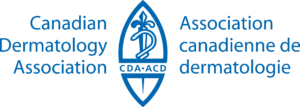
Get to the root of why it’s there and find the best treatment for you.
Acne can be stressful. It makes us self conscious when we don’t want to be. We keep our skin clean but still it persists. It appears right when we least expect it. What’s the deal?
At Dermatology on Bloor we love tackling the hard questions. Investigating the cause of your acne and finding the right treatment is eye-opening when you have our team on your side! Welcome to Part Two of our Conquering Acne Series.
Last month we explored scarring, and this month we’re going to the source – why do you have acne in the first place? And what can you do about it right now?
Dr. Sam Hanna answers our questions:
Can you give us an intro as to how acne forms?
Absolutely. Firstly a micro-comedone forms; this is a tiny blackhead that forms when the cells lining pores get “sticky” and don’t shed properly. This little plug gets oils trapped behind it. This stickiness is a natural function of human skin – but applying overly greasy moisturizers or skin care products at this stage can make it worse.
Ah, our first clue! So greasy moisturizers aren’t good?
They don’t help – but contrary to popular belief, moisturizing your skin while you have acne is actually a good idea. A greasy moisturizer can make acne worse, and so can dry skin. The idea is to choose a great quality non-comedogenic moisturizer to help control the skin’s oil environment. By doing this, you can help your skin keep a healthy oil balance and keep it from going into overdrive.
What happens next in the acne formation process?
Once a micro-comedone has formed, skin oils (sebum) back up and thicken within the pore. Our sebum production is heightened in our teenage years, which is why teenage acne is so prominent. The sebum plug grows, and the microcomedone turns into a comedone or whitehead – this is a visible white bump just under the skin (not the same as a pustule, which is when the skin fills with pus on top of the surface).
Once it’s a whitehead or comedone, what happens?
When the pressure becomes great enough, a sebum plug can push through the pore opening and exposure to the air causes it to darken at its tip. That’s how a blackhead is formed at this stage!
What about more intense acne – when it’s very red or inflamed? How does that occur?
The thickened sebum we just spoke about is a great medium in which acne-causing bacteria like Cutibacterium acnes can grow. These bacteria live naturally on human skin but are found in much higher numbers in acne spots. Inflammation leading to the papules (small red bumps) and pustules (pus-filled bumps) happens as a result. This is inflammatory acne. As the process continues, inflammation gets more significant – leading to larger, often painful acne spots called cysts.
If everyone’s skin does this, why are some of us more affected?
Acne is very common – 96% of Canadians will have acne to some degree at some point in their lives. We spoke about the role of hormones in oil-production in the teen years. Similarly, acne that occurs around women’s menstrual periods and in adult women is also hormonally driven.
So I don’t have acne because my skin is dirty?
No! This is a common misconception. Over-cleaning can aggravate acne – especially if you’re stripping the skin of its natural moisture barrier and again, upsetting the oil balance. Keeping the skin clean with a gentle cleanser is important however, and not doing this may worsen the appearance of acne.
What about food?
In general, unless a person consumes very significant amounts of sugars, starchy foods, or dairy products, diet does not seem to play a role in acne.
So now that we have a handle on why this is happening, how do you select products in such a saturated market of acne products? What legitimately works?
A great ground rule is to avoid heavily fragranced or coloured products. Keep in mind that products that claim to be “natural” or “organic” are often poorly formulated with lots of ingredients that may serve no purpose other than to irritate the skin or flare acne. Avoid products and practices that are abrasive or harsh.
Is exfoliating good?
Yes, you want to gently exfoliate – but not every day, and some products strip skin more than they clean. Products with micro-beads or grit, abrasive pads and sponges, stiff-bristled motorized rotary brushes and over-aggressive washing will only worsen acne. Over-the-counter products containing salicylic acid or benzoyl peroxide can be helpful for mild comedonal acne.
So what essential course of action do you recommend to someone with acne?
Take care of the basics. Use a gentle cleanser and moisturizer along with an over-the-counter topical acne product containing salicylic acid or benzoyl peroxide. Eat a reasonable diet. Avoid picking and popping. If acne is worsening or not responding adequately, see your family doctor to begin prescription therapy. If your acne is still not under adequate control, it may be time to see a dermatologist.
Thank you, Dr. Hanna!
Looking to learn more? Next month our journey in understanding acne continues with Part 3 of our series.




